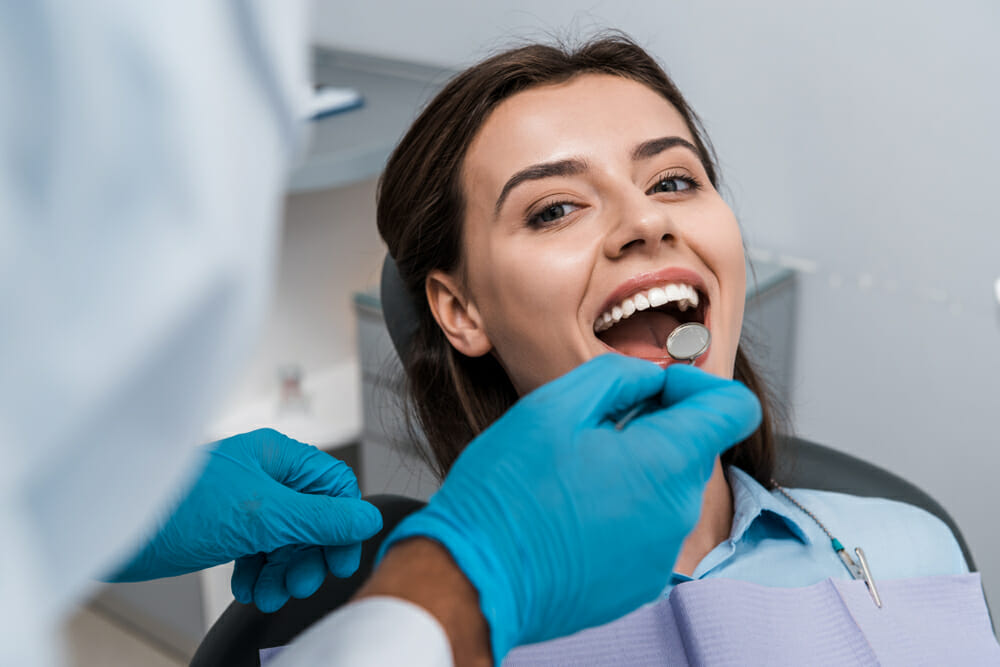More About Legacy Orthodontics
More About Legacy Orthodontics
Blog Article
Indicators on Legacy Orthodontics You Should Know
Table of ContentsThe Single Strategy To Use For Legacy OrthodonticsLegacy Orthodontics Can Be Fun For EveryoneThe Greatest Guide To Legacy OrthodonticsSome Known Factual Statements About Legacy Orthodontics Getting The Legacy Orthodontics To Work
At Advanced Orthodontics, we give clients with a all natural treatment experience. Additionally, we offer adjustable treatment timetables, versatile repayment alternatives and an enjoyable, delightful experience. orthodontics. Telephone call ( 480) 357-4900 today to find out more and routine a consultation.An orthodontist is a dentist educated to detect, avoid, and deal with teeth and jaw irregularities. Orthodontists function with individuals of all ages, from kids to adults.
Malocclusion, or misaligned teeth, can lead to dental problems, including dental cavity, periodontal disease, and hard or excruciating eating. But not everyone is birthed with straight teeth. If you have a negative bite or big areas between your teeth, you might intend to consult a dental professional concentrating on orthodontic treatment.
7 Easy Facts About Legacy Orthodontics Described
( Picture Credit History: DigitalVision/Getty Images) Orthodontists use taken care of and detachable dental tools, like dental braces, retainers, and bands, to change the position of teeth in your mouth. Orthodontic therapy is for oral abnormalities, including: Crooked teethBite troubles, like an overbite or an underbiteCrowded teeth or teeth that are too much apartJaw misalignmentThe goal of orthodontic treatment is to boost your bite.
While you could assume of orthodontists as generally for children or teens who require dental braces, they can deal with oral troubles at any age. Orthodontists attend university, dental institution, and orthodontic school.
, yet not all dental experts are orthodontists. They concentrate on two areas: Exactly how to effectively and safely move teeth Just how to correctly assist advancement in the teeth, jaw, and faceOnce an orthodontist has completed training, they have the choice to come to be board licensed.
Legacy Orthodontics Fundamentals Explained
Misalignment, or malocclusion, is the most usual reason people see an orthodontist. It is hereditary and is the outcome of dimension distinctions in between the top and reduced jaw or in between the jaw and teeth. Malocclusion results in tooth congestion, an irregular jaw, or irregular bite patterns. Malocclusion is usually treated with: Your orthodontist attaches steel, ceramic, or plastic square bonds to your teeth.
If you have only small malocclusion, you might have the ability to utilize clear braces, called aligners, as opposed to typical braces (https://www.intensedebate.com/people/legacyortho1). Some people require a headgear to help move teeth right into line with pressure from outside the mouth. After dental braces or aligners, you'll need to wear a retainer. A retainer is a personalized device that maintains your teeth in position.
They can produce additional space in the mouth without having to pull teeth. Orthodontists use wires, surgical screws, or plates to support your jaw bone.
You may need to see an orthodontist if you have: Crowding or not sufficient space for all of your teethOverbite, when your top teeth come your base teethUnderbite, when your bottom teeth are too much forwardSpacing or concerns with gapsCrossbite, which is when your top teeth fit behind your bottom teeth when your mouth is closedOpen bite or an upright space between your front bottom and upper teethMisplaced midline, when the facility of your base and upper teeth do not align Fixing an oral malocclusion can: Make biting, eating, and speaking easierImprove the balance of our face and your general appearanceEase pain from temporomandibular joint conditionsSeparate your teeth and make them much easier to cleanse, helping stop tooth decay or cavities It's typically a dental professional that first notifications misaligned teeth throughout a regular exam.
The smart Trick of Legacy Orthodontics That Nobody is Discussing

Throughout your initial orthodontic appointment, why not try this out you'll likely have: A dental examPhotos taken of your face and smileDental X-raysPanoramic (360 level) X-rays of your face and headImpressions to produce molds of your teethThese examinations will certainly assist your orthodontist know how to continue with your therapy. invisalign. An orthodontist is a dental professional who's had training to treat your teeth and jaw
Orthodontists might execute surgery, exams,X-rays,and even more to assist you attain a more comfy, healthier smile. An orthodontist is focused on your bite, so something like a damaged tooth would certainly be handled by a dentist. Orthodontists are dental practitioners however not all dental professionals are orthodontists. Orthodontists are concentrated on your bite, or the means your teeth meshed, and the straightness of your teeth.
Ever before asked yourself exactly how celebs always seem to have completely lined up teeth? Orthodontists are dental specialists that focus on remedying irregularities in the teeth and jaws.
7 Easy Facts About Legacy Orthodontics Described

While dental braces are one of the most frequently acknowledged orthodontic therapy, orthodontists have a varied toolkit at their disposal. The certain technique picked depends on the seriousness of the instance, the patient's age, and private choices. These reliable braces make use of a system of braces adhered to the teeth and connected by wires.
These detachable trays are personalized to gradually shift the teeth's placement. In situations of narrow jaws, palatal expanders can be made use of to produce space for correct tooth positioning.
Report this page